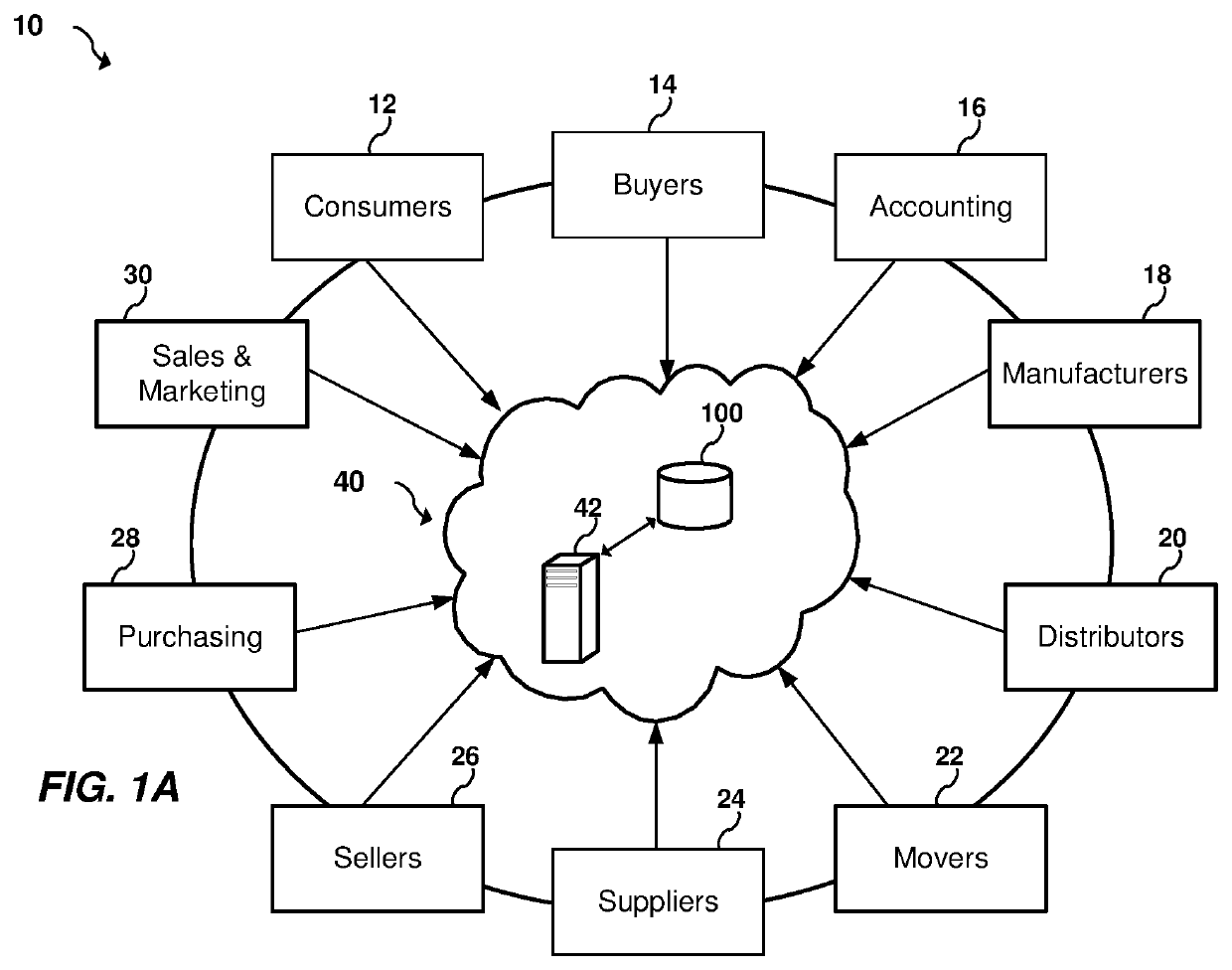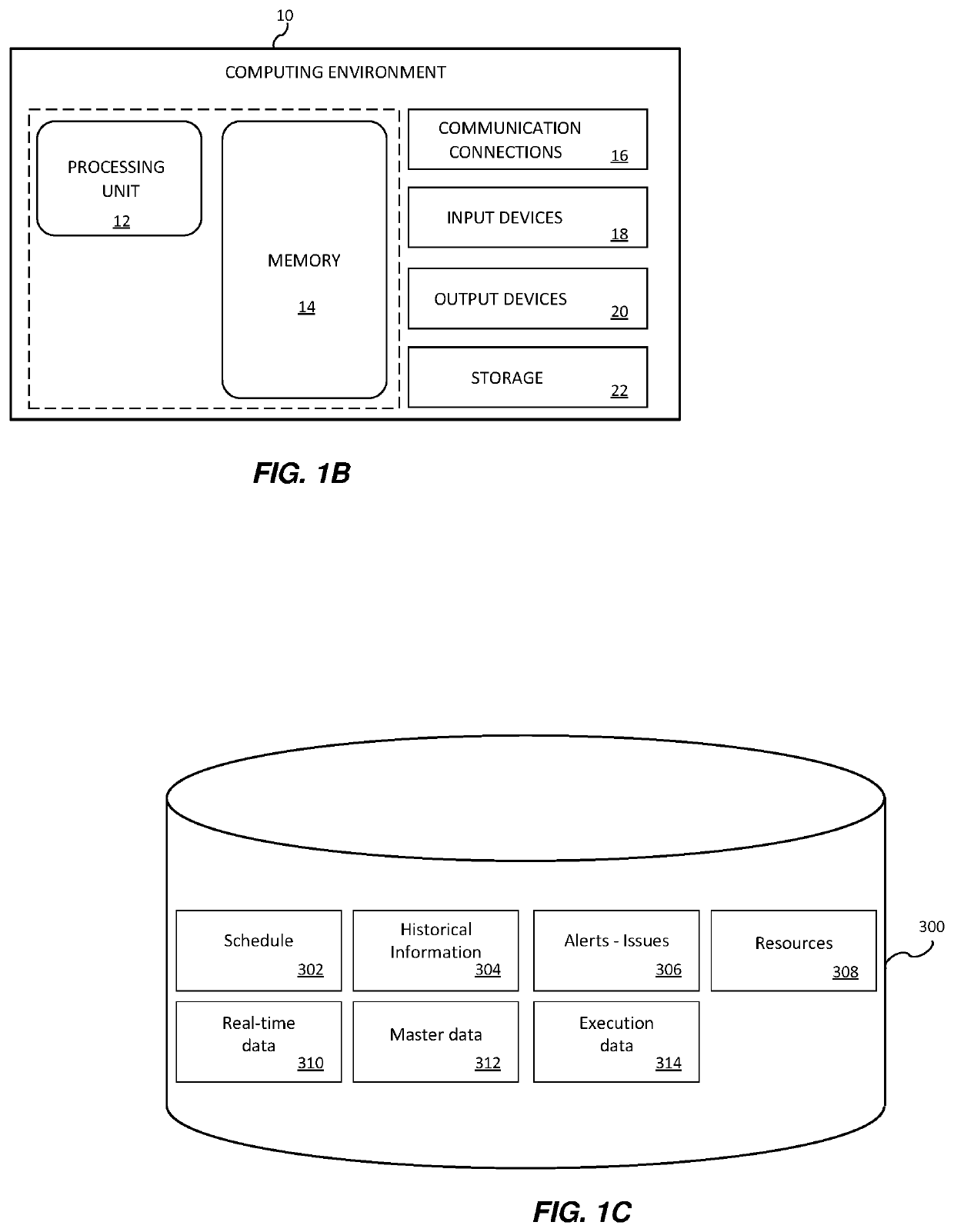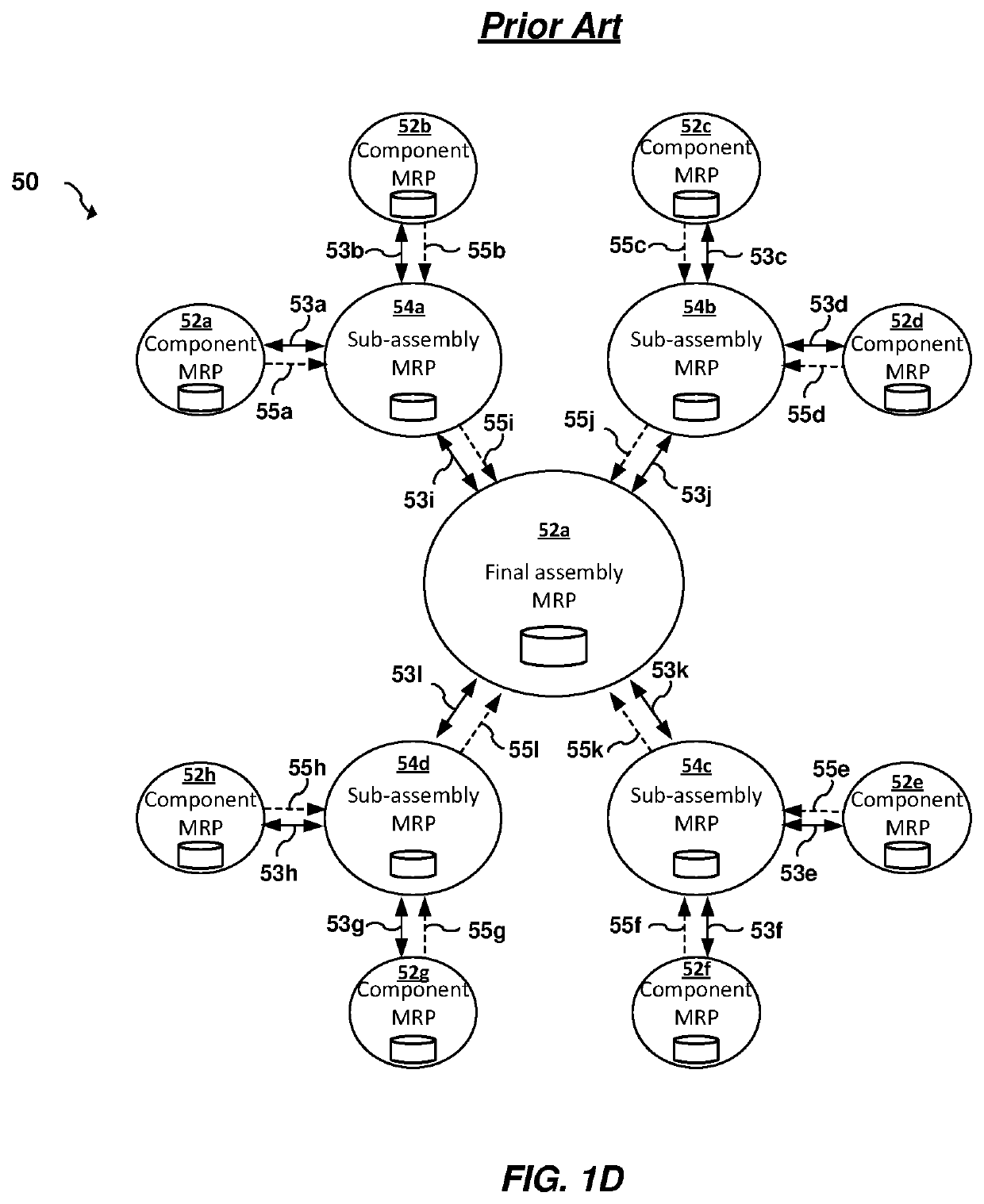System and computer program for providing high delivery performance in a value chain
a value chain and computer program technology, applied in the field of enterprise value chains, can solve the problems of inherently flawed arrangement between the companies and/or entities in the value chain network known in the prior art, requires additional computer hardware and storage, and introduces unnecessary communications throughout the disparate network. achieve the effect of high delivery performan
- Summary
- Abstract
- Description
- Claims
- Application Information
AI Technical Summary
Benefits of technology
Problems solved by technology
Method used
Image
Examples
Embodiment Construction
[0017]Referring now to the drawings, wherein like reference numerals designate identical or corresponding parts throughout the several views, preferred embodiments of the present invention are described.
[0018]Real-time visibility to supply-chain-wide inventory levels and capacities is necessary to systematically and immediately optimize trade-offs when forced to re-plan due to sudden supply chain disruptions. While a fully optimized re-plan might affect a great portion of the supply network, a less disruptive re-plan may be preferred to isolate plan changes to a small subset of the supply-network. Today, this analysis is nearly always manual because the planner lacks real-time information. When the change is manual and non-systematic, the re-plans often achieve feasibility but fall short of optimal. With a real-time systematic approach, the chance of achieving a better balance between low-disruption and optimal performance is greatly enhanced.
[0019]One embodiment of the present inve...
PUM
 Login to View More
Login to View More Abstract
Description
Claims
Application Information
 Login to View More
Login to View More - R&D
- Intellectual Property
- Life Sciences
- Materials
- Tech Scout
- Unparalleled Data Quality
- Higher Quality Content
- 60% Fewer Hallucinations
Browse by: Latest US Patents, China's latest patents, Technical Efficacy Thesaurus, Application Domain, Technology Topic, Popular Technical Reports.
© 2025 PatSnap. All rights reserved.Legal|Privacy policy|Modern Slavery Act Transparency Statement|Sitemap|About US| Contact US: help@patsnap.com



